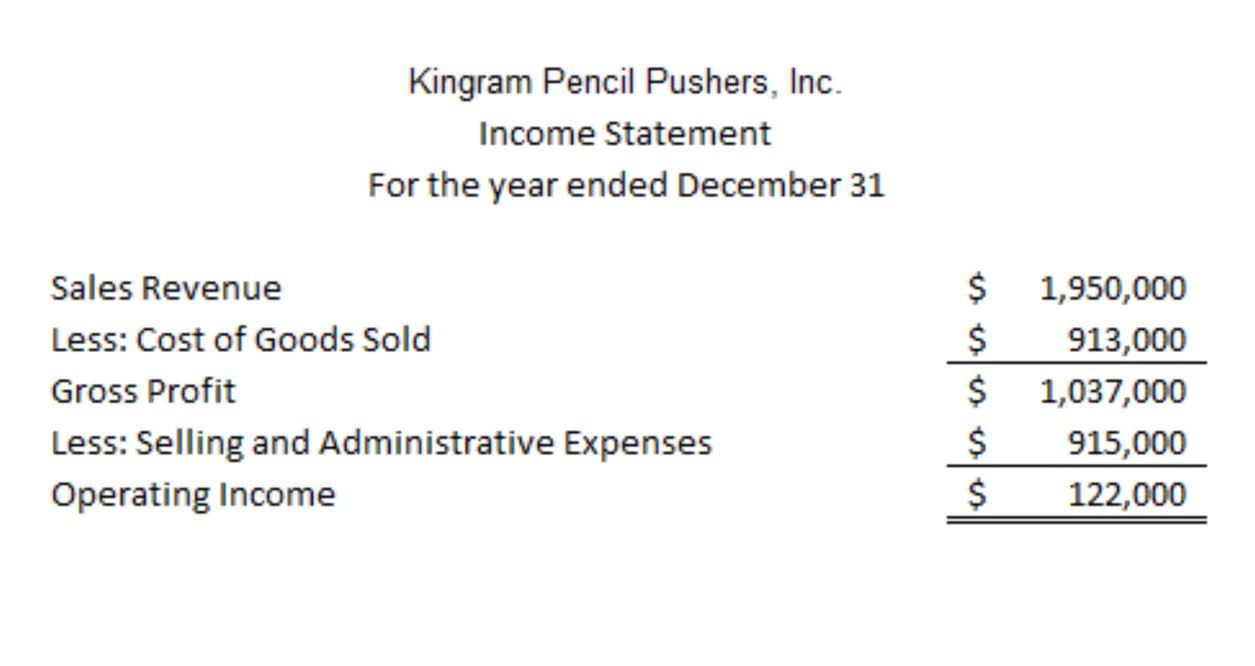Content

Non-current assets or long-term assets include long-term investments, property, plant, and equipment (net of accumulated depreciation), also known as fixed assets, and operating lease right of use assets. The three main components or sections of a balance sheet are assets, liabilities, and shareholders’ equity. A multi step balance sheet classifies business assets and liabilities as current or long-term (over twelve months). The accounting equation shows how a company’s assets, liabilities, and equity are related and how a change in one typically results in a change to another. In the accounting equation, assets are equal to liabilities plus equity. Equity on the other hand is the shareholders’ claims on the company assets.
- In the listing, more liquid accounts such as inventory cash, as well as trade payables, appear at the top followed by illiquid accounts such as equipment and long-term debt.
- It cannot give a sense of the trends playing out over a longer period on its own.
- Notes payable may also have a long-term version, which includes notes with a maturity of more than one year.
- While they may seem similar, the current portion of long-term debt is specifically the portion due within this year of a piece of debt that has a maturity of more than one year.
- It also forms the building block for the double-entry accounting system.
- This then allows them to predict future profit trends and adjust business practices accordingly.
Consider an end-to-end payables solution that automates the easy stuff, so you can focus on growth. Double-entry bookkeeping started being used by merchants in Italy as a manual system during the 14th century. A screenshot of ServiceNow, Inc.’s comparative Consolidated Balance Sheets for December 31, 2021, and December 31, 2020, is shown below. Bookkeeping for Owner-Operator Truck Drivers The source is its 10-K annual report in an SEC company filing dated February 3, 2022. Explore what a career in finance is really like with Forage’s finance virtual experience programs. Balance sheets should also be compared with those of other businesses in the same industry since different industries have unique approaches to financing.
Buy Inventory on Credit
A company must also usually provide a balance sheet to private investors when attempting to secure private equity funding. In both cases, the external party wants to assess the financial health of a company, the creditworthiness of the business, and whether the company will be able to repay its short-term debts. The income statement and statement of cash flows also provide valuable context for assessing a company’s finances, as do any notes or addenda in an earnings report that might refer back to the balance sheet. The assets in the accounting equation are the resources that a company has available for its use, such as cash, accounts receivable, fixed assets, and inventory.
Review the above balance sheet example from Apple, Inc., to understand how to read a balance sheet. Regardless of the company’s size, a balance sheet should be clear and straightforward. Both columns list their line items with a total that equals the other, to balance.
Limits of the Accounting Equation
In this expanded accounting equation, CC, the Contributed Capital or paid-in capital, represents Share Capital. Retained Earnings is Beginning Retained Earnings + Revenue – Expenses – Dividends – Stock Repurchases. Because the https://kelleysbookkeeping.com/best-accounting-software-for-quicken/ Alphabet, Inc. calculation shows that the basic accounting equation is in balance, it’s correct. The income statement shows revenues, costs of goods or services, expenses, and net income (loss) for an accounting period.
- Some candidates may qualify for scholarships or financial aid, which will be credited against the Program Fee once eligibility is determined.
- If this balance sheet were from a US company, it would adhere to Generally Accepted Accounting Principles (GAAP), and the order of accounts would be reversed (most liquid to least liquid).
- In a balance sheet, the left side outlines a company’s asset, while the right-hand side showcases liabilities and shareholders’ equity.
- There are a variety of accounting formulas for businesses that can be used for a variety of purposes, such as producing a statement of cash flows, reviewing inventory turnover, and analysing total sales.
- It’s important to remember that a balance sheet communicates information as of a specific date.
If the shareholder’s equity is positive, then the company has enough assets to pay off its liabilities. Any amount remaining (or exceeding) is added to (deducted from) retained earnings. Accounts Payables, or AP, is the amount a company owes suppliers for items or services purchased on credit. As the company pays off its AP, it decreases along with an equal amount decrease to the cash account. The double-entry practice ensures that the accounting equation always remains balanced, meaning that the left side value of the equation will always match the right side value. The image below is an example of a comparative balance sheet of Apple, Inc.